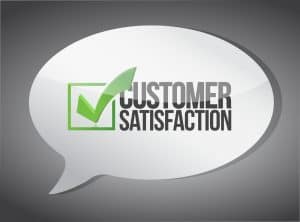
Customer support is the primary human touchpoint a company has with its customers. Increasingly, new technology is being called on to deliver real-time resolutions to queries and problems.
Transforming your customer support experience with contextual awareness will transform your business. Support tickets are a fairly impersonal experience. They’re based on an efficiency paradigm from the 1980s. It’s the digital equivalent of saying, “take a number and wait in line.” Today businesses are shifting to selling more services. And they’re thinking about the total customer experience. Because of this, customer support is the primary human touchpoint a company has with its customers. Ticketing systems do not deliver customer-centric experiences on their own. Many companies are using chatbots to solve the simplest support issues. And quite often, customers will solve their own issues using forums. Where does this leave the support agent?
Alt-Tab is Not a CX Solution
The remaining support issues that reach an agent’s desk are the hardest ones to solve – they’re complex. Support reps can no longer just write up your issue and send it off; they now have to solve it. In a global survey of 5,000 customers, 51% said they will never do business with a company after one poor service experience. That means that in 2021 “First contact resolution” has become the #1 performance metric for contact centers.
So how do reps solve these intractable problems? They become super agents who Alt-Tab from one app to the next, collecting bits of data from each, then analyzing it in an attempt to solve the issue. The majority of support reps typically work across 6-7 apps. And even worse, some 15% of reps work across 12 or more apps. CX pundits joke about Alt-Tab as a failed “integration strategy.”
It Gets Worse…Even More Alt-Tab
Originally, support ticketing hoped to provide a central system for recording customer communications. However, not everyone likes using ticketing systems for internal communications. In fact, different departments often use different communication and project management tools where each tool is best suited to the work of the department. Product support and customer service will Slack back and forth; technical and engineering teams prefer Jira. All of which adds even more apps for the service agent to manually stitch together.
In addition, reps are often working with old-fashioned tools, which don’t allow for visibility into real-time data. One survey of service agents estimates 512 million hours are lost annually by reps navigating through tools; this adds up to $8.3 billion lost in productivity every year.
Contextual Awareness: From Cost Center to Profit Center
New customer-focused technologies have brought many benefits to the customer-business relationship when product revenue business models were the norm. Now a sea change is happening as businesses shift to selling services. And in this world, support is central to the customer experience and growing your service revenue.
Imagine the possibilities if you could consolidate the information from the many apps used by support teams into a single service ticket without losing the valuable features they provide? No Alt-Tab’ing between applications. No more stitching together all of the data points to assess what has gone awry. Now all support data, even product signals, would be analyzed together, giving a contextual view of the customer’s issue. With expanded contextual awareness, support reps would be much more able to solve customer issues on the first contact.
One long-running consumer survey identified that 67% of churn is preventable if an issue was “resolved at first contact.” So naturally, front-line support reps are where you should focus to tame churn. Front line customer support is where you can leverage solutions like Zendesk as a catalyst for changing your customer experience.
The Inevitability of Data-driven and Real-Time Resolutions
Contextual awareness is the all-important success factor here. Reps must be fully aware of what issues the customer is experiencing, and they must have access to real-time insights and recommendations in a single pane. With a complete picture, support reps can troubleshoot problems on-the-fly as well as identify the unserved needs of their customer. As a result, customers will be happier and much more willing to spend more with you.
With contextual awareness, first-line reps and support managers are able to take the customer experience to the next level. Contextual awareness is how businesses can deliver modern support. Support reps transform from being reactive to growth-oriented. A customer experience that converts tickets from support issues to opportunities for growing the lifetime value of your customers.
If the reps have all the information in one place, then they can spend more time empathizing as opposed to logging into twenty different screens to figure out where the problem is. This single pane approach is not just about resolving the issue. It can also be of significant value to the organization. The rep can be more specific about the issue and explain what has gone wrong, providing more in-depth analysis and explaining where mistakes have been made. Removing the bad experience and replacing it with a good one.
According to a recent McKinsey report, the cost of a new customer support strategy is small change compared to the long-term benefits it will provide. Following an agile transformation approach and deploying new AI technologies, organizations could reap huge benefits in conversions (15%-20%), declining service costs (50%), and improved customer satisfaction (10%-20%). Those metrics are hard to ignore.



























